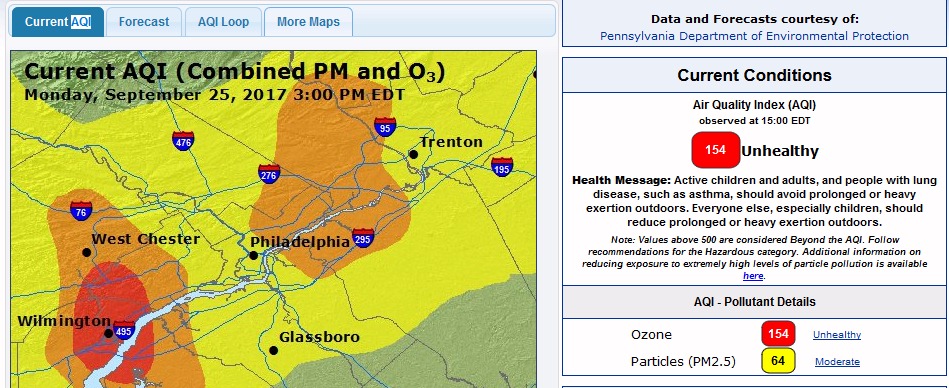Current models indicate an increase in air quality alerts. The increase risk is not necessarily from an increase in pollution. An on-going research study conducted by InternetU.org suggests a warming climate is likely contributing to reduction in air quality.
The frequency of air quality alerts is on the rise in the United States and many other parts of the world. The Philadelphia Area is a prime example. Philly and suburbs have had multiple days in a row when it was unhealthy to breath. The Action Alert days are also starting earlier in the season and lasting longer into the summer. In fact, a recent string of days with temperatures above 90 have resulted in an Action Alert on September 25, 2017.
When the Earth’s surface temperature is hot enough and sunlight provides enough ultraviolet light, Nitrogen Oxides (NOx) and Volatile Organic Compounds (VOCs) in the air create a chemical reaction. The result is ozone. Tropospheric ozone is very destructive to plants and animals. Tropospheric ozone is killing an unprecedented number of trees. Unfortunately, it is also causing a massive amount of respiratory and immune system problems in humans, such as, asthma.
